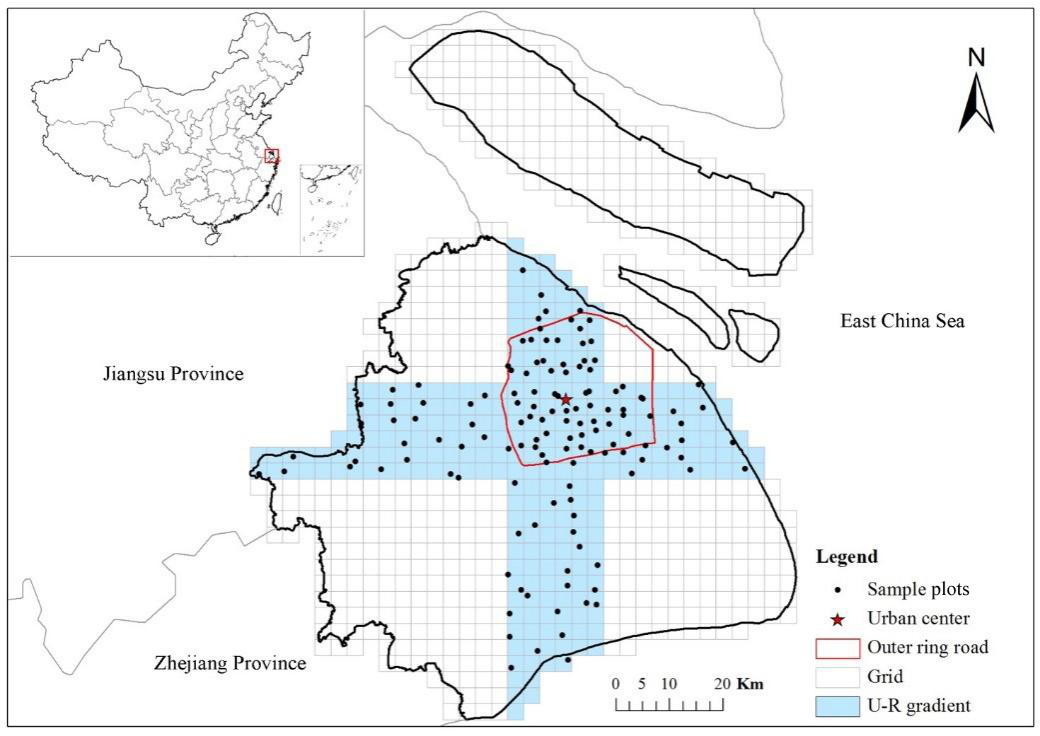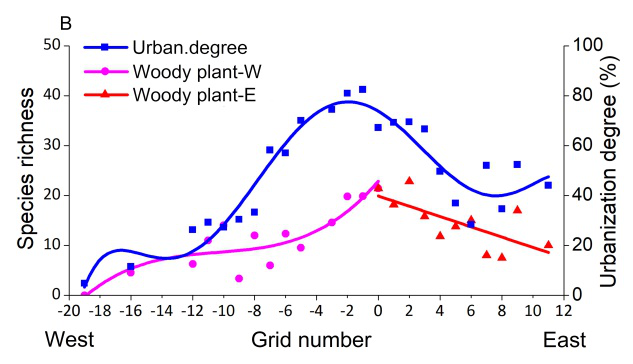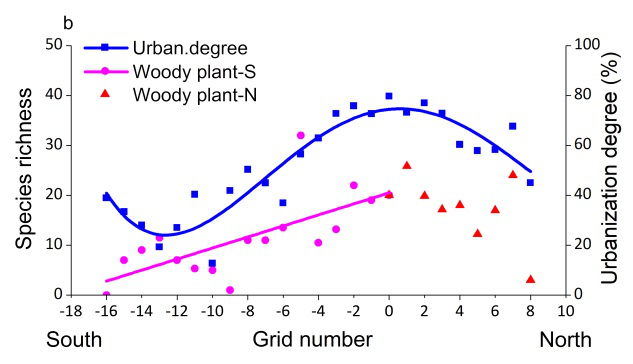Research Programmes/ Spatial Patterns of Urban Plant Diversity and Multi-scale filtering Mechanism of Landscape, National Natural Science Foundation of China
Spatial Patterns of Urban Plant Diversity and Multi-scale filtering Mechanism of Landscape, National Natural Science Foundation of China
2020-12-02 10:50 
Project Leader:Junxiang Li
Duration:2019.01-2022. 12
Urbanization is one of the major causes for plant biodiversity loss at regional scale. There are several hypotheses, such as the luxury effect, legacy effect, habitat heterogeneity, etc., have been proposed to explain the underlying mechanisms on how urbanization influences plant biodiversity. However, all these hypotheses were proposed to explain the underlying mechanism in single perspective. Their generality and applicability, particular to Chinese cities, are still need to be tested. To date, there is yet lack of synthetic mechanism to explain the spatio-temporal patterns of urban plant diversity. In this project, we proposed a novel hypothesis of landscape filtering on urban plant biodiversity, that is, urban landscape is consist of various diverse landscape functional units, each unit is integrative of socioeconomic factors, habitats and land use histories, the spatial heterogeneity and dynamics of these landscape functional units decided the spatiotemporal patterns of urban plant diversity. To test our hypothesis, we first investigate urban plant species richness and their spatial patterns across the entire Shanghai metropolitan region as a case study, then socioeconomic factors, land use/cover types, habitats conditions, land use histories, soil types and their physical and chemical conditions will be investigated using remotely sensed images classification, spatial interpolation, questionnaire, Whittaker sample plot, etc., to categorize and formulate urban landscape functional units, and further to test the landscape filtering hypothesis, and lastly to relate urban plant diversity to landscape functional unit at multiple scales.

Distribution of plots and plots for the survey of plant diversity in the east-west and south-north directions of Shanghai


The spatial pattern of woody plant diversity and urbanization on the east-west and south-north transects of Shanghai


 Tel 021-34206578 021-54742134
Tel 021-34206578 021-54742134 SCHOOL OF DESIGN, SHANGHAI JIAOTONG UNIVERSITY,NO.800 DONGCHUAN ROAD,MINHANG DISTRICT,SHANGHAI.
SCHOOL OF DESIGN, SHANGHAI JIAOTONG UNIVERSITY,NO.800 DONGCHUAN ROAD,MINHANG DISTRICT,SHANGHAI. Email 200240
Email 200240